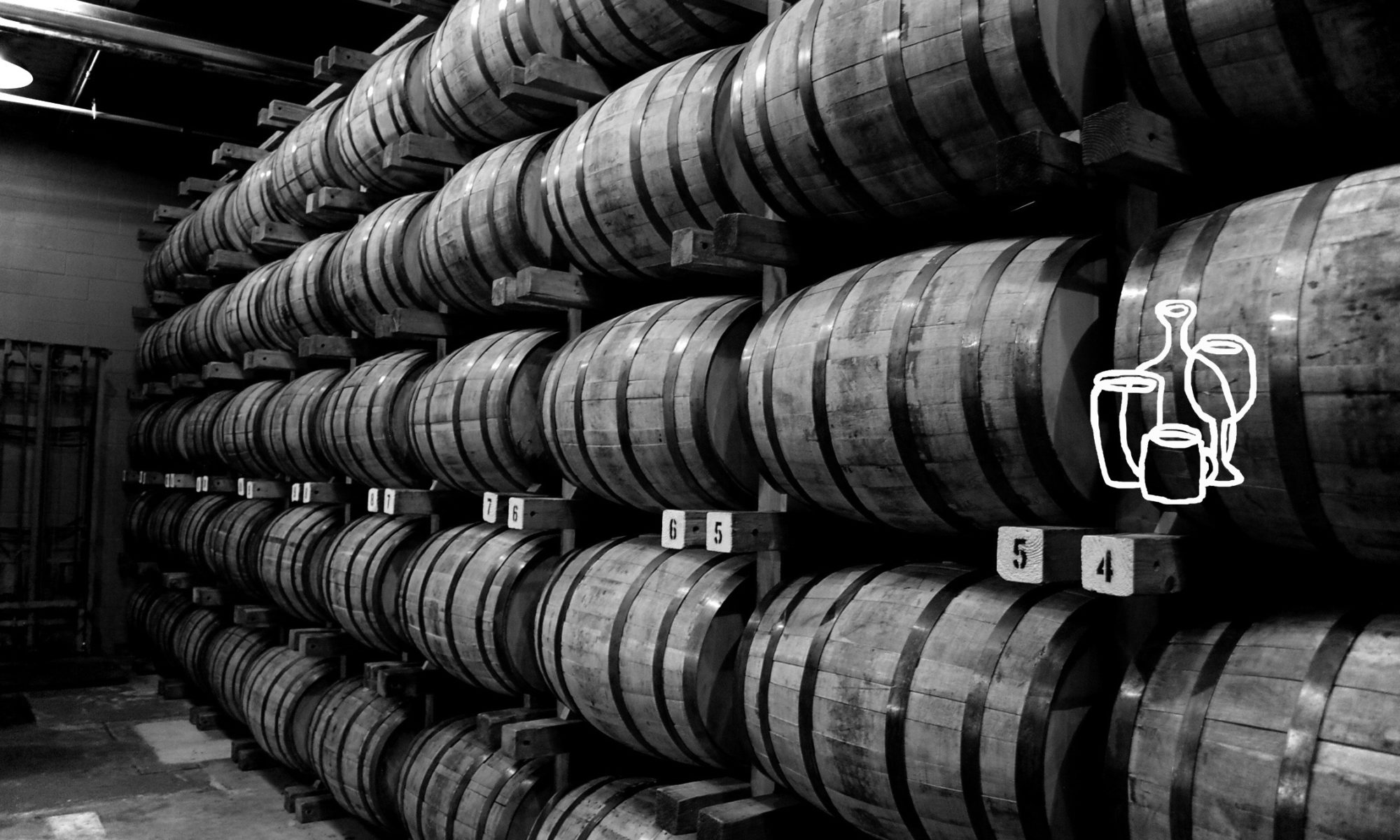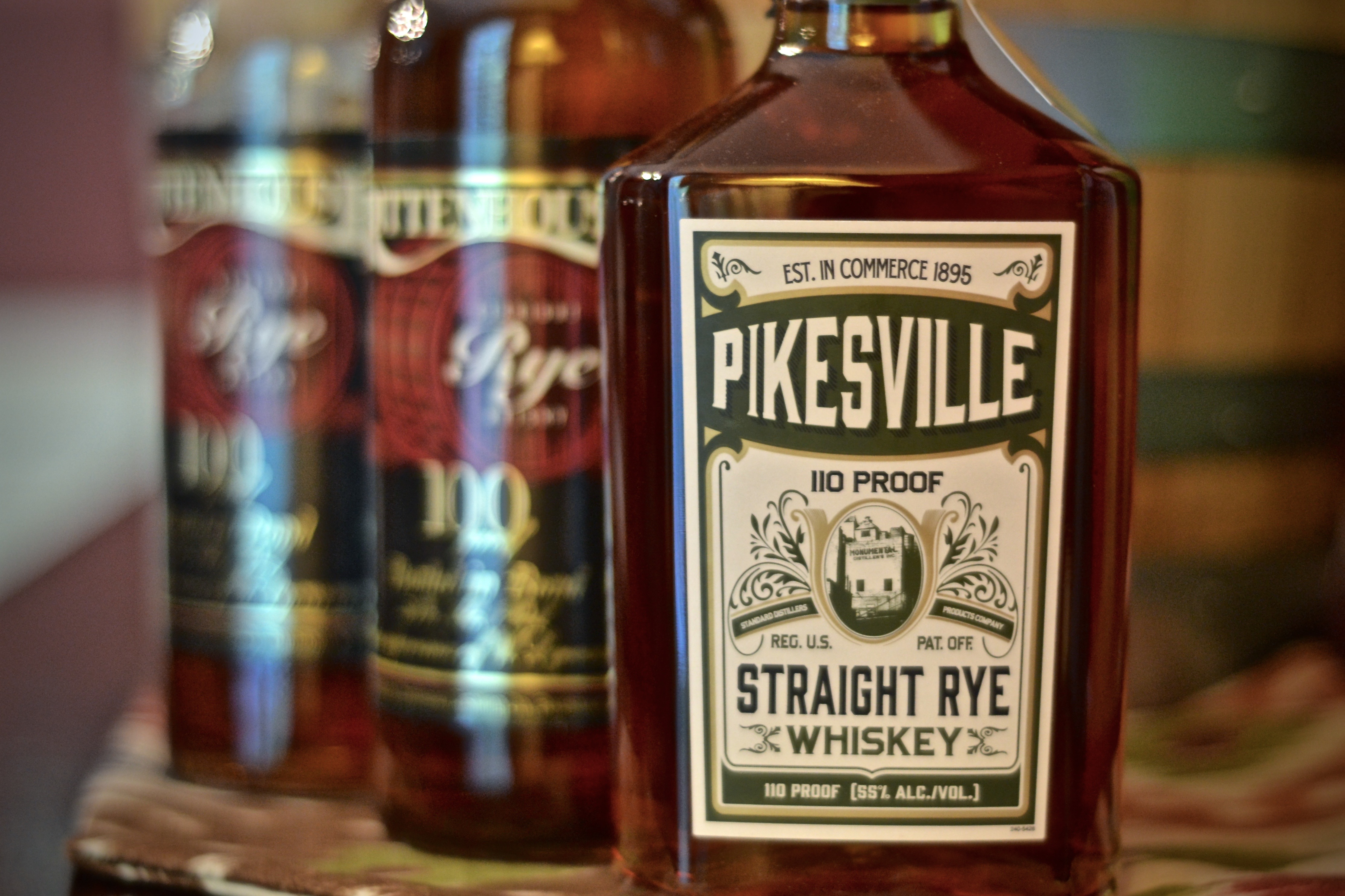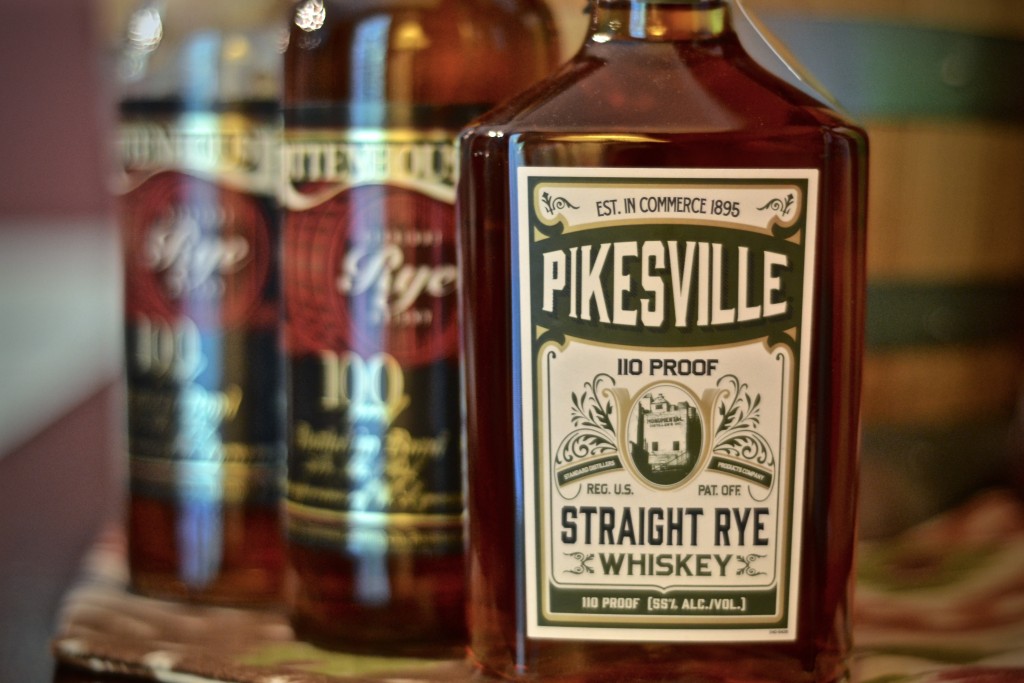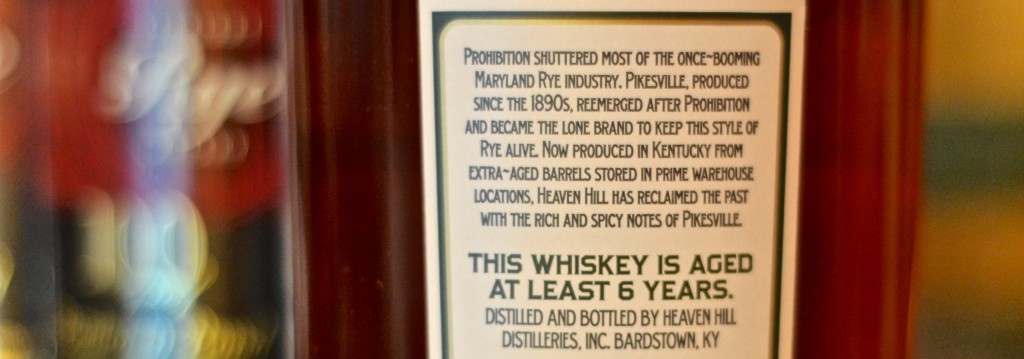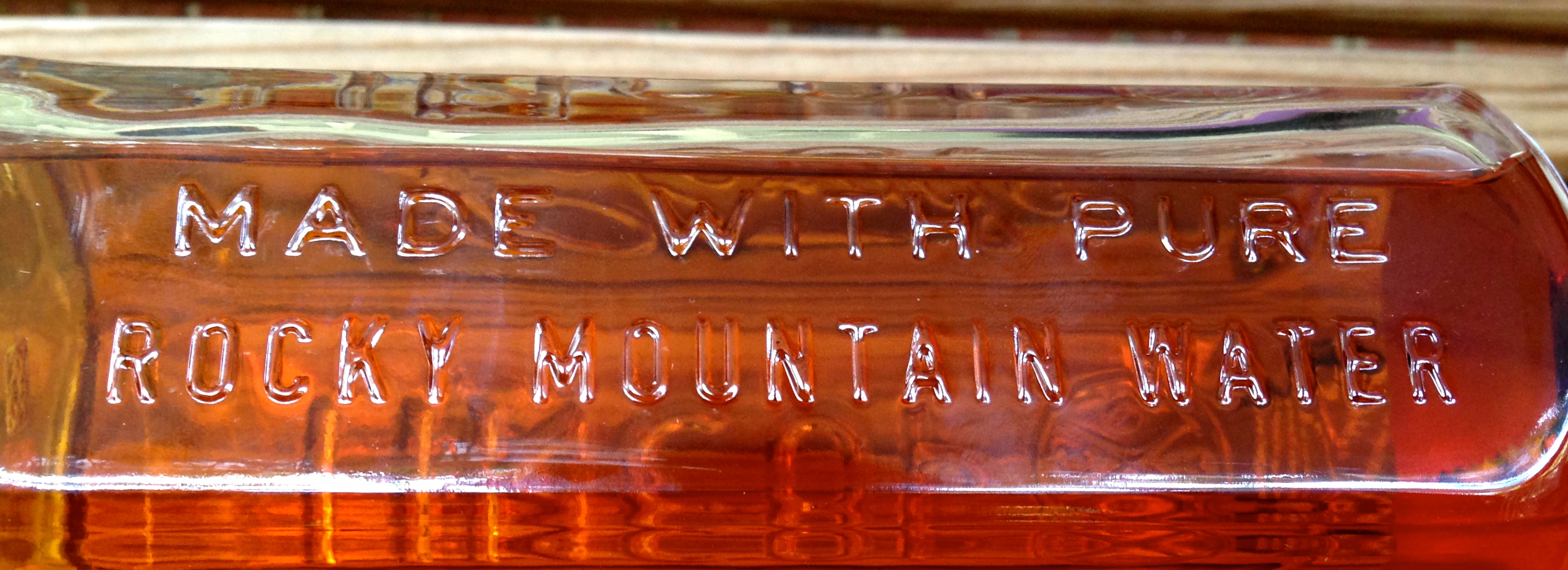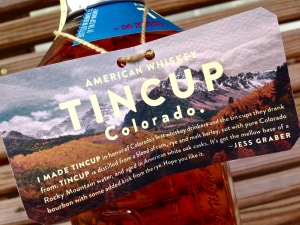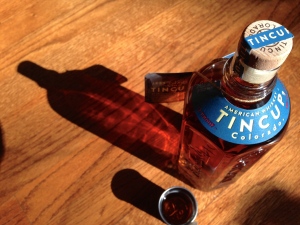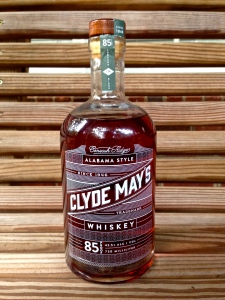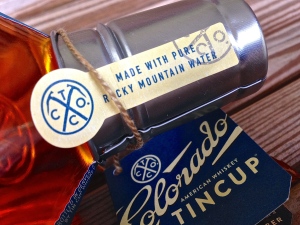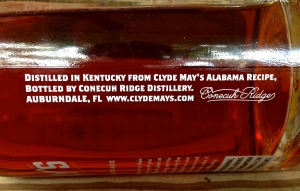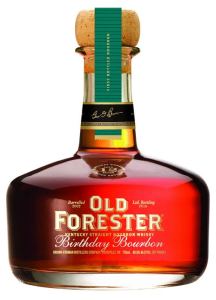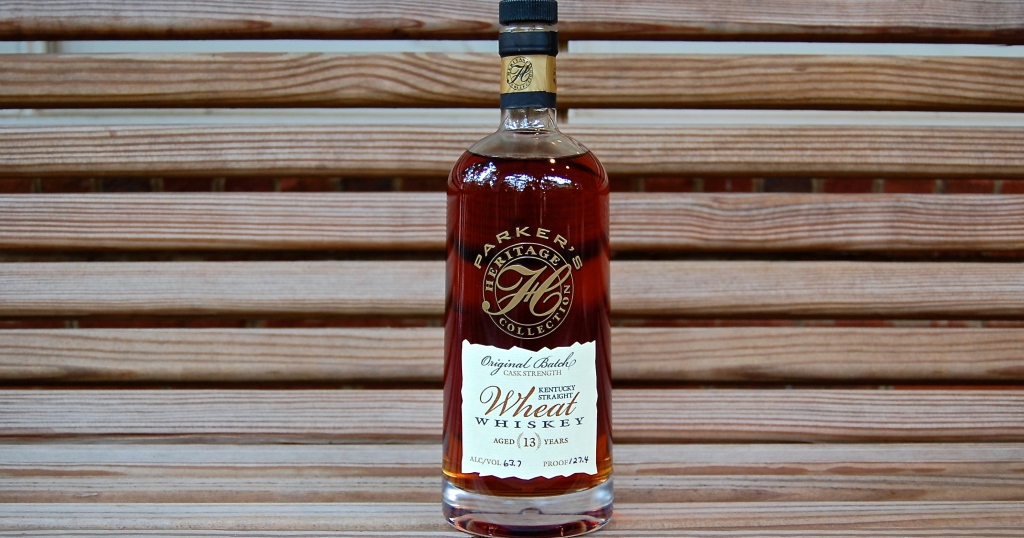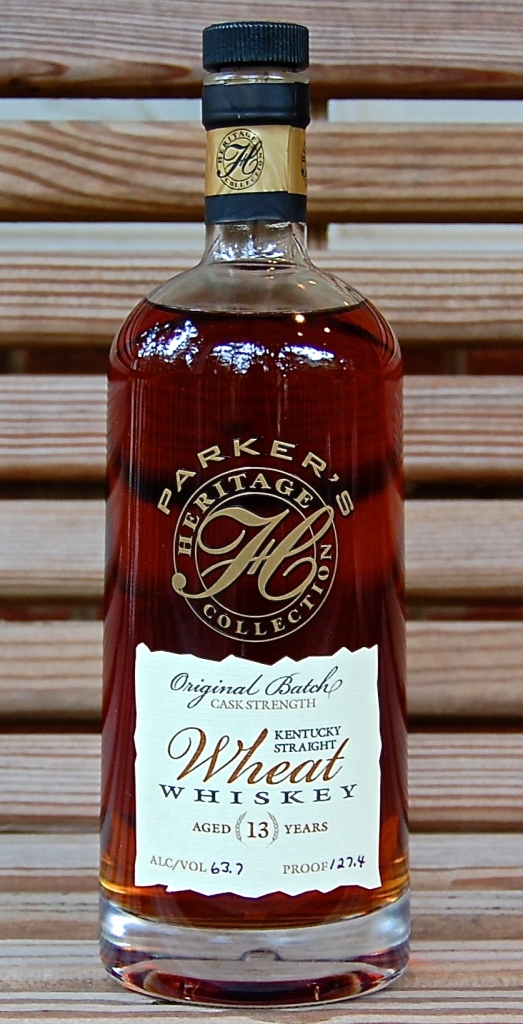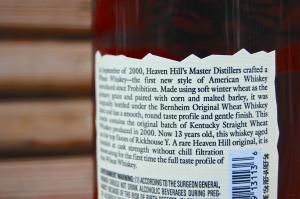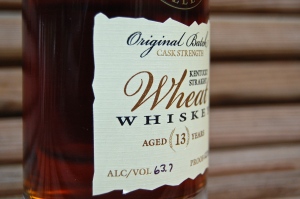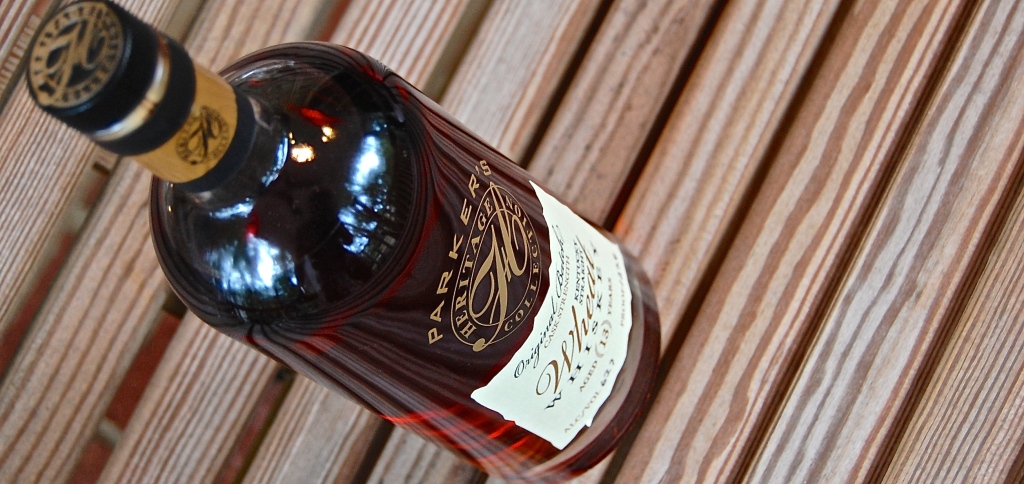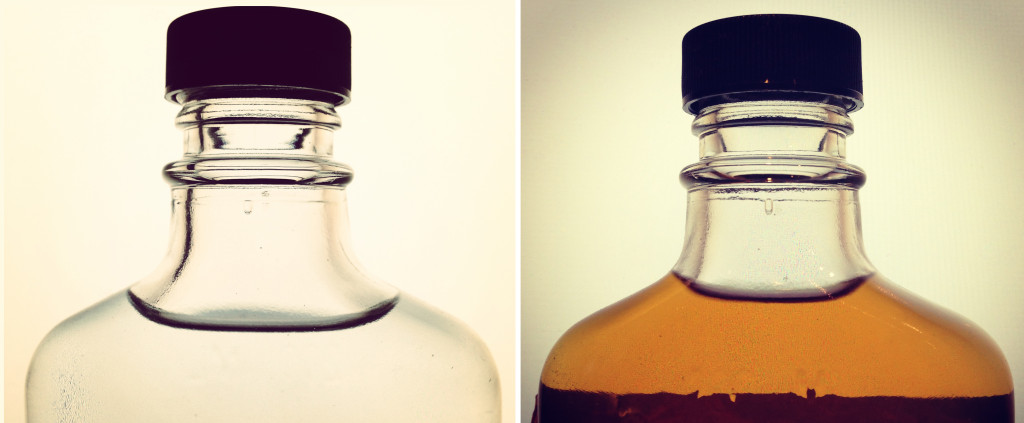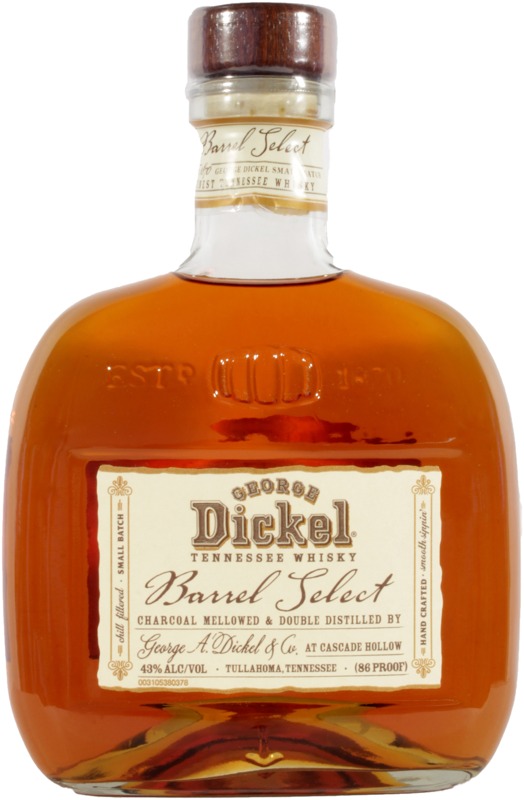Here’s the big news first – Heaven Hill has a new rye whiskey out that’s essentially an older, higher proof version of the beloved Rittenhouse Rye Bottled in Bond. This new one is six years old (at least) and 110 proof, rather than four years old and 100 proof. Wow, what’s not to love about that? Heaven Hill has time and time again put their amazing bank of great, aged whiskey to excellent use, and there’s no reason to think this won’t be another home run along the lines of the their Elijah Craig barrel proof releases.
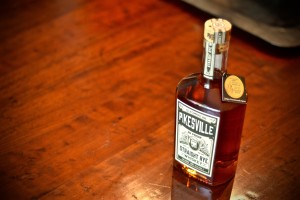 Where this gets a bit confusing, though, is with the label. This new rye is not a Rittenhouse – rather, it is called Pikesville. Pikesville is also the name used on a younger (three year), lower proof (80), regional rye brand from Heaven Hill. Both of these Pikesville whiskeys share roots going back to a Maryland brand that originated way back in the 1890’s and was acquired by Heaven Hill in 1982. Neither of these Pikesville whiskeys should have anything to do with Rittenhouse Rye. But they do. Got all that?
Where this gets a bit confusing, though, is with the label. This new rye is not a Rittenhouse – rather, it is called Pikesville. Pikesville is also the name used on a younger (three year), lower proof (80), regional rye brand from Heaven Hill. Both of these Pikesville whiskeys share roots going back to a Maryland brand that originated way back in the 1890’s and was acquired by Heaven Hill in 1982. Neither of these Pikesville whiskeys should have anything to do with Rittenhouse Rye. But they do. Got all that?
Heaven Hill is careful to make clear that they produce Pikesville in Kentucky. And remember how I said this was essentially an older, higher proof Rittenhouse? Sure enough, Heaven Hill has confirmed that Pikesville (a self-proclaimed Maryland-style rye) and Rittenhouse (a self-proclaimed Pennsylvania-style rye) are indeed the same mash bill (51% rye, 39% corn, 10% malted barley). So it goes… as long as they taste good, who am I to quibble with the distinctions between a Maryland-style and Pennsylvania-style when they’re both actually made in Kentucky and are essentially siblings of each other?
The new Pikesville rye has started rolling out in select markets, and will be seeing national distribution this fall. Rather than just taste it on its own, I decided to do a side by side with the Rittenhouse Bottled in Bond. While Rittenhouse doesn’t carry an age statement, word is that it’s basically four year old whiskey, so the Pikesville has roughly two years of extra time in the barrel on it. Heaven Hill has also said that Pikesville’s barrels have been carefully chosen from a more specific section of the rick houses than what Rittenhouse is pulling from. So here we go – a four year old, Pennsylvania-style rye and six year old Maryland-style rye, both made in Kentucky – head to head.
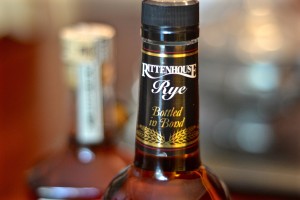 Rittenhouse Rye Bottled in Bond Straight Rye Whiskey
Rittenhouse Rye Bottled in Bond Straight Rye Whiskey
100 Proof, Approx. $24 Retail
Tasting Dates: June 15 – July 17, 2015
Thirsty South Rating: Good Stuff
First off, I want to point out that this is the Rittenhouse that was distilled by Heaven Hill (D.S.P. KY 1 for all you whiskey geeks) – not the older version that was distilled by Brown-Forman. Rittenhouse has long been a favorite for rye-based cocktails, especially when you can find one for $20 (it has crept up to the mid-$20s in most retailers).
On the nose, there’s some honey and butterscotch, but it’s buried beneath green wood, a cinnamon edge, a hint of vanilla. Neat, you get a rush of heat, then some dark brown sugar, a bit of rum raisin, dark cocoa powder, assertive rye spice, and a rich syrupy (but tingly) finish. This is no minty/super-herbal rye – it wears it’s hefty corn presence prominently and wears it well. A cube of ice rounds out the Rittenhouse nicely and helps balance the spicy edge and the dark, sweet core. But really, this rye is on the beast-end of the spectrum – it’s a bit too powerful for its own good when drinking neat, but works wonders when paired with lighter ingredients in cocktails like a Manhattan.
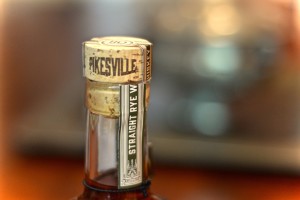 Pikesville Straight Rye Whiskey
Pikesville Straight Rye Whiskey
110 Proof, Approx. $50 Retail
Tasting Dates: June 15 – July 17, 2015
Thirsty South Rating: Excellent
The color here vs. the Rittenhouse is quite similar, maybe a bit darker for the Pikesville, but both a pleasing copper hue. Dang, right away on the nose, you get a lot more nuance, a lot more character, a lot more… intrigue. Despite the higher proof, the nose comes across more integrated, less heat. There are waves of honey and brown sugar and vanilla – typical bourbon notes – but the rye presence keeps the sweetness in check, weaving in and out with subdued floral notes, warm cedar wood, dark cocoa-coated almonds (funny enough, I’ve gotten a similar note from the Elijah Craig Barrel Proof – is there something going on in those Heaven Hill barrels?).
Sipped neat, the Pikesville continues to show the benefits of those two years in the barrel. The spice level perks up – sharp jabs of nutmeg and clove and cinnamon, again the warm wood, and those cocoa-coated almonds playing out over a long warm finish. Over ice, even nicer, still sharp. A touch of water also helps bring out the depths of flavor. You do get the commonalities with the Rittenhouse (Maryland vs. Pennsylvania, be damned) – and, again, this is clearly not a rye of the heavy-mint/dill variety.
Verdict: So the extra few years and 10 points of proof on the Pikesville are indeed beneficial. I’m still more likely to use Pikesville for a Manhattan than to sip neat, which makes it a pricey option to amp up a drink, but whether in a cocktail or sipping over ice, Pikesville offers a solid upgrade over the already-very-solid Rittenhouse Rye. The Maryland vs. Pennsylvania semantics don’t bother me at all – they’re both good drinks, made by a good distiller, and competitively priced. I’m betting the Pikesville will not be an easy one to track down, so if you do see a bottle and you’re a rye fan, do give it a shot.
*******************************
